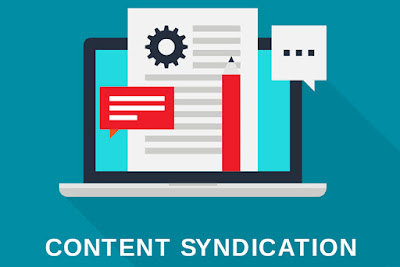The world is going gaga over the ‘digital’ buzzword. The technology tempest has everyone in its grips. Both the techie and non-techie in the B2B sales & marketing world is battling with that one question- How do I raise the bar and sell my goods online? Worry not! Even amid this pandemic, there are loads of strategies and campaigns that can be undertaken while sitting in the ramparts of your home and simultaneously fight Corona.
It is safe to assume that the lockdown period gave the sales industry a lot to ponder upon and define some moves that would come in handy to deal with the new age consumer effectively.
If you belong to the sales industry, I am sure you would not have missed the terms ‘sales enablement services,’ ‘content syndication marketing,’ and ‘B2B demand generation services.’ These are a part of one’s regular lingo when you work in the B2B technology sector. These help push the sales agenda and make a quick buck. A bunch of technicalities is involved while implementing these services, but, by and large, they are doable. If you are getting good money in return, what’s the harm?
Sales-specific strategies
These days a lot of companies offer sales enablement services. These services primarily comprise sales content, training, support, and tracking metrics to boost sales and make a significant difference in the ROI.
Remember, when a salesperson is fully equipped with the relevant data and necessary training to deal with even the toughest consumer, the deal is very likely to be cracked immediately. As they say, ‘fortune favors the prepared mind.’
The next step to support sales enablement is content syndication marketing. Many CRM software are used by the sales teams to track a buyer’s journey. Often companies leverage powerful content syndication strategies to bring a consumer’s attention to the seller’s website and enjoy benefits such as improved website traffic, improved time spent on the website, and better user engagement.
As a part of the implementation of the content syndication strategy, sellers upload relevant product/service information on a lot of websites via whitepapers, blogs, and articles. The content is also marketed, propagated, and promoted through a network of social media and various search engines to bring the targeted audience to one’s website. When your prospective consumer is reached via any of the websites tapped, the deal becomes sweeter. Therefore, content syndication marketing has multiple benefits. It not only helps forward a company’s lead generation strategy but also generates the right kind of demand from, obviously, the right target audience.
Both—be it an amateur or an experienced professional—in the sales industry make strategic use of BANT and install base campaigns. The seller just needs to have the right lead nurturing attitude and apply the BANT approach. Install base campaigns are somewhat subtly similar to the guerrilla and ambush marketing techniques in their approach to competition. The updated install base information—one that gives an accurate measure of the number of units of a product or service that are actually in use—definitely gives the foresight to see where the competition is heading, make appropriate changes to sales strategy, and explore some of the tactics that no one has experimented with before.
Why BANT?
BANT, in the sales terminology, stands for Budget - Authority - Need - Timeline. It is a time-tested sales technique that sifts the hot leads from the non-buyers and time wasters.
BANT contains a series of questions. These questions let the salesperson know whether the prospective buyer has the required Budget to buy, Authority- has a say in the buying matter, Need- whether the prospect has an immediate or a long-term need of the product, and Timeline- whether the buyer plans to implement the product/service in his business immediately or has some other plans. A smart salesperson would effectively use the BANT technique to navigate his will with the consumer.
Seller’s journey
A seller’s journey is nearly equal or even longer than a buyer’s. Although in this day and age, he has the digital tools at his behest, he is donning multiple hats and replicating a host of strategies to bring that cheeky consumer to his product. If the buyer is becoming smarter by the day, the seller is not left behind in his quest to entice and convert the qualified lead. By applying a multitude of strategies and services pertaining to customer data, most demand generation companies are making hay while the lockdown-unlock sun shines.


Great post! QLead AI makes Qualified Lead Generation effortless with its advanced AI tools, helping businesses identify genuine prospects and accelerate sales growth efficiently. A must-have for modern marketers! Visit us for more!
ReplyDeleteQualified Lead Generation
Great read! This blog clearly explains the value of Qualified Leads. QLead AI makes lead qualification smarter, ensuring sales teams engage only high-intent prospects for better results. Visit us for more!
ReplyDeleteQualified Leads